
Hoshino Resorts RISONARE Atami
Atami Onsen
Shizuoka
Magic Time Stay adorned by the colors of the sky, sea, and forest.

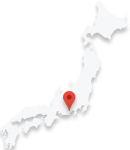
Shizuoka Prefecture is located almost in the center of Japan and is a prefecture with a long and large area from north to south.
In the center of the prefecture is Mt. Fuji, which can be said to be a symbol of Japan, and has attracted many people since ancient times.
It maintains a mild and temperate climate in Japan, and the south side of the horizontal prefecture area faces the Pacific Ocean, and there are many abundant ports, so it is also a prefecture blessed with food, clothing, and shelter.
In fact, it is also blessed with water sources from the mountains lining the north side, including Mt. Fuji, which flows into the Pacific Ocean as a large river. Since the rich soil spreads along the coast, agriculture is also thriving, and many items such as tea are special products. The fishing port facing the Pacific Ocean is blessed with abundant marine products, and many processed products are made from the seafood.
In addition to food, industrial production is also thriving, and there are about 200,000 business establishments. Among them are several offices represented by Japan's proud Yamaha, Suzuki, Tamiya, etc.
The Tokaido Highway, which connects Tokyo with Nagoya, Osaka, etc., runs through the prefecture, making it easy to access from any location.
Since there is a lot of rich nature left, it is said that the living environment is kept in a well-balanced manner, and the prefectural character is calm.
Shizuoka Prefecture is a relatively accessible prefecture because it is located between major cities in Japan and there are many tourist spots.
Along the Tokaido, which was developed in the Edo period, there are expressways and JR lines, so you can move smoothly.
Mt. Fuji Shizuoka Airport is located in Makinohara City in the prefecture, and although it is only for domestic flights, it can be accessed directly from Kyushu and Hokkaido. From this airport, there are shuttle buses to major cities in the prefecture such as Shizuoka City, Hamamatsu City, and Kakegawa City, so you can move to the prefecture without any problems.
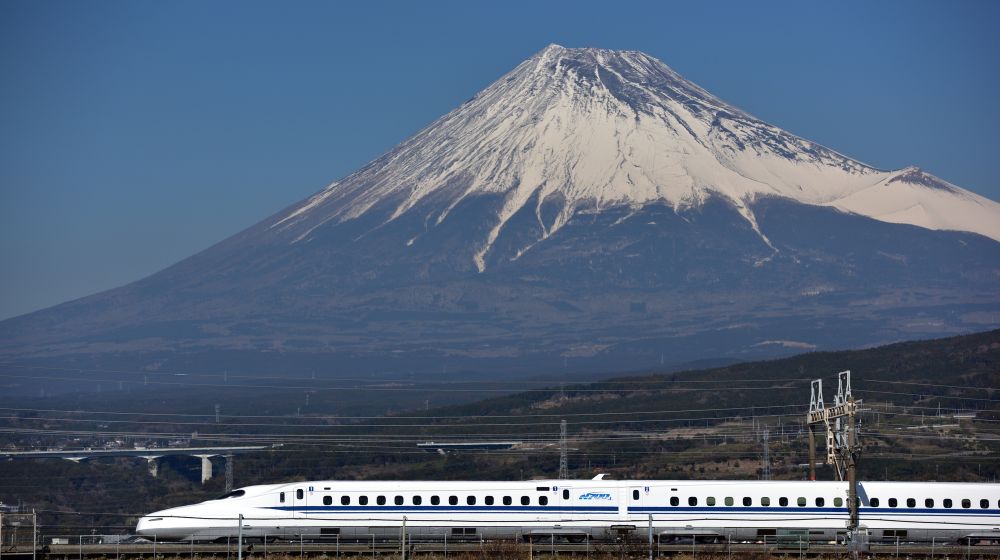
<Shinkansen / Train>
Tokyo Station→Shizuoka Station (Tokaido Shinkansen about 1 hour)
<Cars>
Tokyo→Shizuoka (about 2 hours 30 minutes)
<Shinkansen / Train>
Nagoya Station→Shizuoka Station (Tokaido Shinkansen about 1 hour)
<Cars>
Nagoya→Shizuoka (about 2 hours 30 minutes)
<Shinkansen / Train>
Kyoto Station→Shizuoka Station ( Tokaido Shinkansen about 1 hour 30 minutes)
<Shinkansen / Train>
Hakata Station → Shizuoka Station(Sanyo Shinkansen , Tokaido Shinkansen from Kyoto about 4 hours 30 minutes)
<Airplane and Bus>
Fukuoka Airport→ Mt. Fuji Shizuoka Airport (about 1 hour 30 minutes) → Shizuoka Station (about 50 minutes)
<Shinkansen / Train>
Shizuoka Station→ Hamamatsu Station(Tokai Shinkansen about 20 minutes or Tokaido Main Line about 1 hour 30 minutes)
<Shinkansen / Train>
Shizuoka Station→ Atami Station (Tokai Shinkansen about 20 minutes or Tokaido Main Line about 1 hour 30 minutes)
<Airplane and Bus>
New Chitose Airport→ Mt. Fuji Shizuoka Airport (about 2 hours 30 minutes) → Shizuoka Station (about 50 minutes)
Shizuoka, which is blessed with a warm climate and abundant resources, has traces of people living there since the Jomon period, which is quite ancient. There are many ruins and historical sites in the Jomon, Yayoi, and Kofun periods a little later, and many of them are designated as cultural properties.
In the era of the samurai, powerful samurai such as the Hojo clan and the Imagawa clan ruled, and the city flourished and the culture flourished. After that, it became the headquarters of the Tokugawa clan before the opening of the Edo shogunate, and even in the Edo period, it became an important place as Suruga where Tokugawa Ieyasu hid. For this reason, roads have been developed since ancient times, and commerce, agriculture, fishing, and crafts are all thriving, and their appearance still remains in various parts of Shizuoka Prefecture.
It is such a historic Onsen resort in Shizuoka, but there are so many of them scattered throughout the prefecture that it is impossible to introduce them. The most famous Onsen in the prefecture is said to have been built about 1,300 years ago by the Manmaki Kamijin of Hakone Gongen, who led the Onsen to the side of Atami (now Yuzen Shrine) to help people who were in trouble with the hot water that springs up in the sea. At that time, volcanic activity was more active than now, and it is speculated that it was like a "hot sea" as the name suggests, and it is said that Atami and this place were named from that meaning.
Of course, Tokugawa Ieyasu, who made this area his headquarters, made great use of it, and there is even a record of his visit to Atami with his son.
The Izu Peninsula, where Atami is located, is dotted with many popular Onsen resorts. Ito, Shimoda, Atagawa, Nakaizu Onsen, Toi Onsen and nearly 40 other Onsen resorts are crowded together.
In addition, Onsens such as Gotemba Onsen at the foot of Fuji, Yaizu Kuroshio Onsen facing the Pacific Ocean, and Benten Onsen around Lake Hamana are also Onsen resorts that have healed the minds and bodies of many people who come and go on the Tokaido and have continued to be loved.
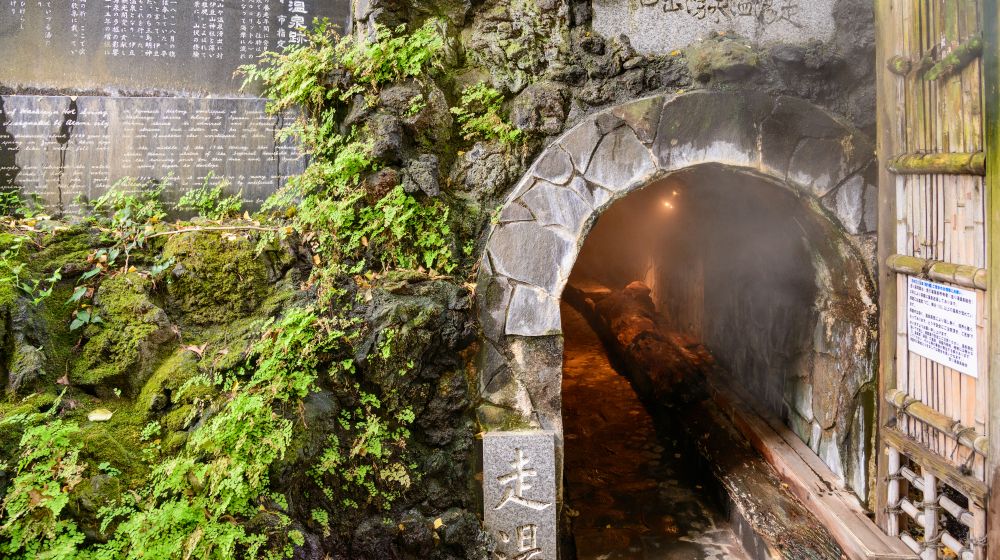
There are quite a few Onsens in the prefecture, both old and new. Among them, the Izu Peninsula is crowded with about 40 Onsen resorts.
There is a great reason for this.
In the sea off the coast of the Izu Peninsula, there is a place where four continental plates collide, which are attracting the attention of geologists around the world, and Mt. Fuji was born due to this crustal activity. Therefore, the activity of magma is also active, which means that many Onsens spring up in this place. The amount of water gushing is also quite large, and it has continued to provide us with a rich Onsen resort without drying up since ancient times.
It is the most famous Onsen resort in Shizuoka. There is also a bullet train station, and access conditions from urban areas are also in place. It is a city that flourished as a Onsen resort, villa area, and resort area.
The total amount of Onsens is 16,600 liters per minute, and 90% of them are high Onsens with a temperature of 42 degrees Celsius or higher, and the average temperature is about 63 degrees Celsius, making it one of the highest Onsen resorts in Japan.
Perhaps because of such blessed conditions, as mentioned above in the history chapter, it has a very old history and is a Onsen resort loved by many historical figures.
Around the time of the Meiji era, Japan's first Onsen sanatorium, Kyukikan, was built under the orders of Tomomi Iwakura, and many politicians and government officials visited for recreation and meetings. In addition, when the Taisho era was entered, the Atami Imperial Residence was also built for the Taisho Emperor.
Against this background, when the railway was drawn to this area, it became popular with literati, scholars, businessmen, etc., and it became crowded with even more people. After the war, the number of general customers increased, and it was loved by famous literati such as Junichiro Tanizaki, Naoya Shiga, Fujimura Shimazaki, and Ryunosuke Akutagawa, and it appeared in their works.
Atami, such a major resort city, is a mixture of retro and old-fashioned shopping streets, Onsen inns, and baptized hotels, inns, and facilities. It has also become a leisure city where you can enjoy abundant sea and mountain food, traditional crafts, and traditional culture.
Most of the springs are sodium calcium chloride Onsens, sodium chloride strong salt Onsens, sodium calcium chloride sulfate Onsens, and sulfate Onsens, as well as sulfate Onsens and simple Onsens.
It is said to be effective for neuralgia, muscle pain, joint pain, frozen shoulder, motor paralysis, joint stiffness, bruises, sprains, chronic digestive diseases, hemorrhoids, sensitivity to cold, recovery after illness, recovery from fatigue, health promotion, cuts, burns, chronic skin diseases, frail children, chronic women's diseases, etc.
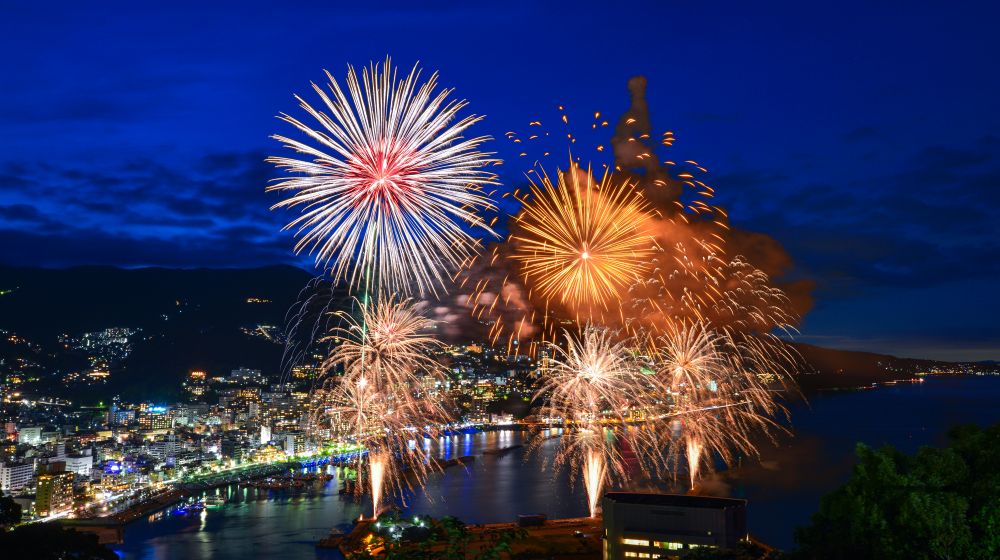
Along with Atami, it is a Onsen resort that boasts its name. It was called Ito from the time of the reign of Mr. Ito, one of the Bandō warriors who appeared in the Kamakura period.
The amount of gushing water is about 32,000 liters per minute, which is the highest in Shizuoka Prefecture, and it is said that there are 750 springs.
It has a history as old as Atami, and has been used and loved by people since the Heian period. In the Edo period, it is also known that the third shogun, Iemitsu, was offered a Onsen as a Onsen bath.
Along with the development with Atami, after the Meiji era, it was popular with many people as a villa area and a recreation area. It was especially loved by literati, ink customers, and artists, and stayed in this place as a residence and produced many works. Akiko Yosano, Hakuaki Kitahara, Saisei Muro, Rosuke Koda, Yasunari Kawabata Names that are known not only in Japan but also in the world are lined up.
Facing Sagami Bay with the Amagi Mountains in the background, Ito is a Onsen resort surrounded by nature, where you can spend a relaxing time while feeling nature. Blessed with seafood from Sagami Bay and agricultural products nurtured by the warm climate and clean water despite being in the mountains, you can enjoy rich and fresh ingredients.
In addition, the unique topography born from the earth's crustal activity surrounding the Izu Peninsula creates a beautiful landscape and is also a highlight. Because it is such a geologically valuable place, it is also certified as a "Japan Geopark".
The quality of the springs is mostly sodium-chloride springs and simple Onsen springs, but there are also sulfate springs and acid salt springs.
It is said to be effective for rheumatoid arthritis, cold hands and feet, bruises, sprains, trauma, burns, peripheral circulatory disorders, sensitivity to cold, dry skin, decreased gastrointestinal function, autonomic instability, various symptoms due to stress (sleep disorders, depression, etc.), recovery from illness, recovery from fatigue, and health promotion.
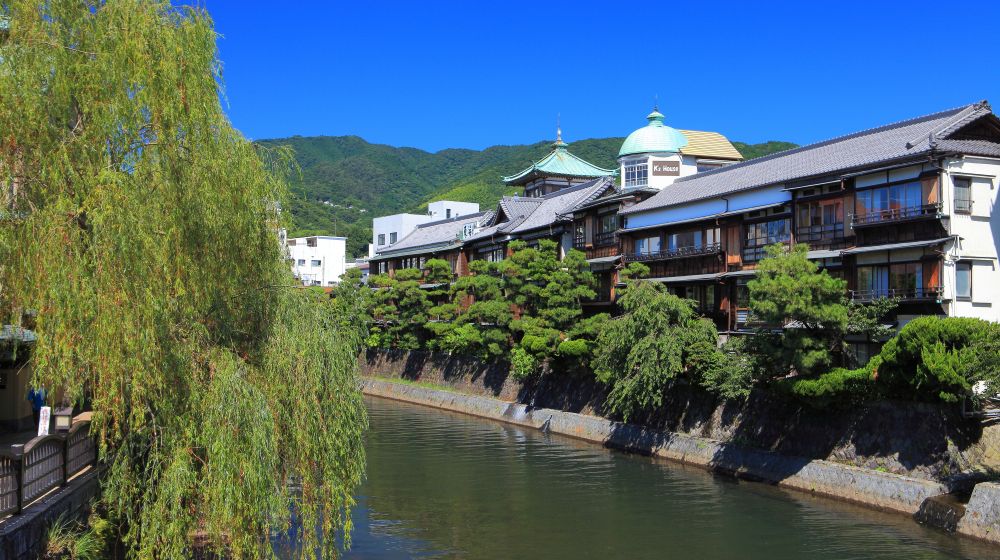
Located along the coast at the tip of the Izu Peninsula, it is a Onsen resort in Shimoda, where you can see many fishing ports and beaches.
At the end of the Edo period, black ships from the United States came to this area Japan which was a historically important place that triggered the change of the era to the opening of the country. The willow-lined avenues and cobblestones that remain from that time remind us of those days and retain the atmosphere. There are cruise ships reminiscent of black ships on the seaside, and you can enjoy leisure while feeling the history.
The history of Onsens is long, along with Atami and Ito, and it is said to be about 1300 years ago, and it is a warm Onsen resort that has been loved by locals for a long time. There are 15 Onsens, the temperature of the springs is about 55 degrees Celsius, and the amount of water flowing out is 5,500 liters per minute, which is abundant for its size.
Currently, it is well known as a place to enjoy marine sports, and it is also popular with people who visit after enjoying them. As a place where you can relax and enjoy Onsens while looking at the beautiful emerald green coast, it transmits a charm that is different from other Onsen resorts.
Of course, you can also enjoy an abundance of seafood. In particular, the fresh golden sea bream, which boasts the largest catch in Japan, is gaining popularity for its elegant taste.
Most of the springs are simple springs, and there are some strong alkaline simple springs. Chronic phase such as autonomic instability, insomnia, depressive states, rheumatoid arthritis, osteopathosis, low back pain, neuralgia, frozen shoulder, bruises, sprains, etc.
It is said to be effective for cold sensitivity, peripheral circulation disorders, decreased gastrointestinal function, fatigue recovery, and health promotion.
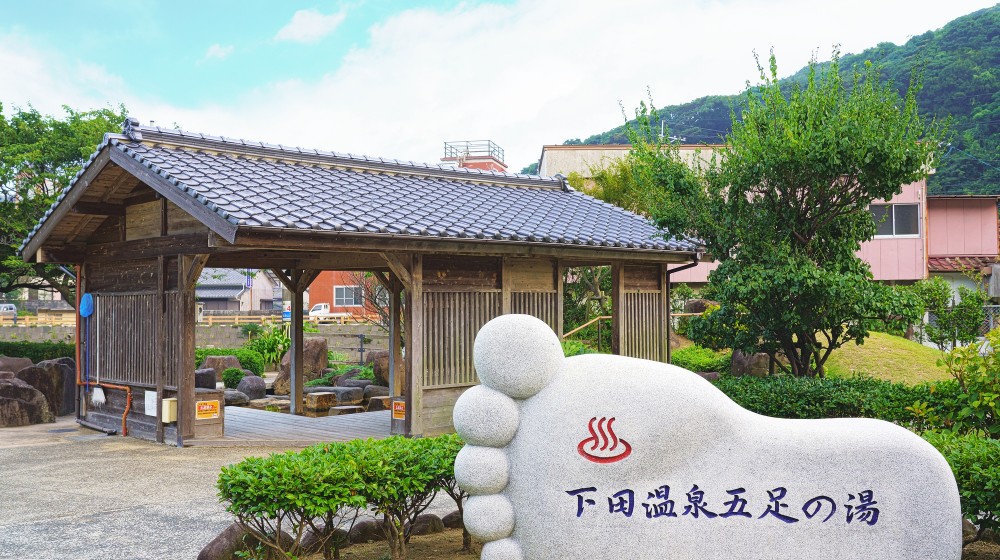
It is a Onsen resort located at an altitude of 1,000 meters above sea level in the Southern Alps on the north side of Shizuoka Prefecture, and is a secret Onsen in the wilderness located at the top of the Abe River.
Although it is such a place, it actually belongs to Shizuoka City, and it is only about 50 km away from Shizuoka City. It is easy to access, with 1 hour by car and 1 hour and 40 minutes by bus.
It has a long history, dating back to the Kofun period, about 1700 years ago, and it is said that its existence was already known during the time of Emperor Onin. Umegashima Onsen is said to have been given the name of "Golden Onsen" by Emperor Onin, but it is said that the background is that there is a gold mine in this place and gold mining was carried out by successive powerful people.
In the Edo period, it seems that a lot of gold was mined so much that Keicho small and large formats were manufactured from the gold mined here.
Umegashima Onsen, which was cherished as a hidden Onsen for Takeda Shingen and later as a Onsen for Tokugawa Ieyasu to treat all diseases, is a place where you can feel such a long history firsthand.
At the current Umegashima Onsen, we are offering hospitality under the name of "dark Onsen" because you can experience nature, history, spring quality, all the depth, and intensity.
Since the source is located in the mountains, it is also attractive that you can enjoy the scenery unique to this area, such as the rock bath in the cave.
The quality of the springs is alkaline simple sulfur springs and sodium bicarbonate springs. It is said to be effective for neuralgia, muscle pain, joint pain, frozen shoulder, motor paralysis, joint stiffness, bruises, sprains, chronic digestive diseases, hemorrhoids, sensitivity to cold, recovery from illness, recovery from fatigue, health promotion, cuts, burns, and chronic skin diseases.
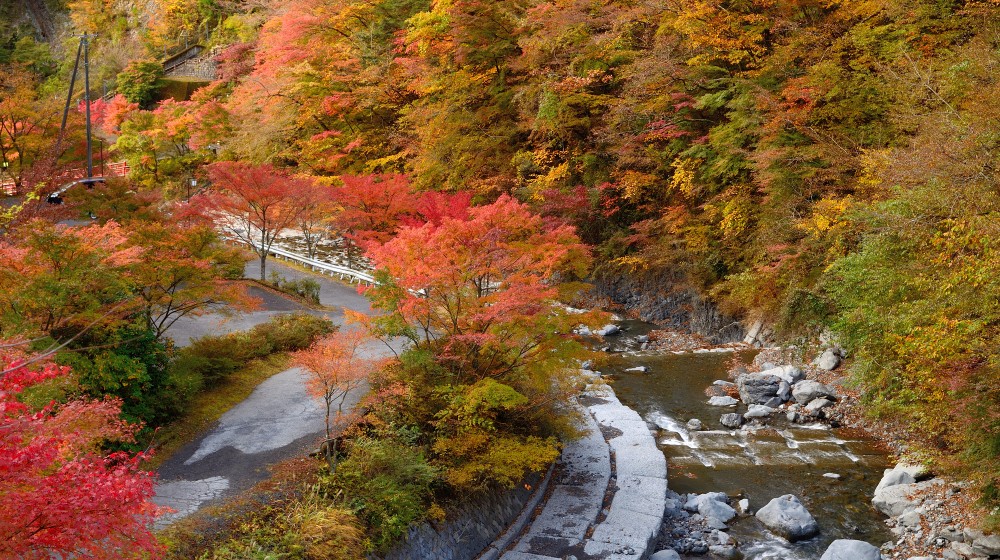
Lake Hamana is located in the western part of Shizuoka Prefecture. It is a brackish lake that straddles Hamamatsu City and Kosai City, and is surrounded by several small Onsen resorts. Among them, Bentenjima Onsen is popular for its beautiful scenery of the symbolic red torii gate standing on Lake Hamana.
The Onsens where you can relax while looking at Lake Hamana and the torii gate are exceptional.
This area is related to Tokugawa Ieyasu, and there are various sightseeing spots, and you can enjoy it other than Onsens.
It may be a good idea to go around the Onsen resorts around Lake Hamana.
There are about five places, such as Tateyamaji Onsen in Kanzanji Temple, which is said to have been founded by Kobo Daishi, and Mikatsukatsu Onsen in Mikaichi, which is famous for its mandarin oranges, and you can enjoy Lake Hamana with a different scenery in each.
It is a Onsen resort that was developed after entering the Showa era, and because it is relatively new, there are plenty of services that you can easily enjoy such as day-trip Onsens. There are also bicycle rentals at the inn, so you can stroll not only to the lake but also to the sea, and taste the famous eel in the city.
The quality of the spring is sodium calcium – chloride strong salt Onsen.
It is said to be effective for rheumatoid arthritis, osteoarthritis, low back pain, neuralgia, frozen shoulder, bruises, sprains and other chronic stages, cold sensitivity, peripheral circulatory disorders, decreased gastrointestinal function, autonomic instability, sleep disorders, depressive states, post-illness recovery period, fatigue recovery, health promotion, cuts, peripheral circulatory disorders, and xerostomia of the skin.
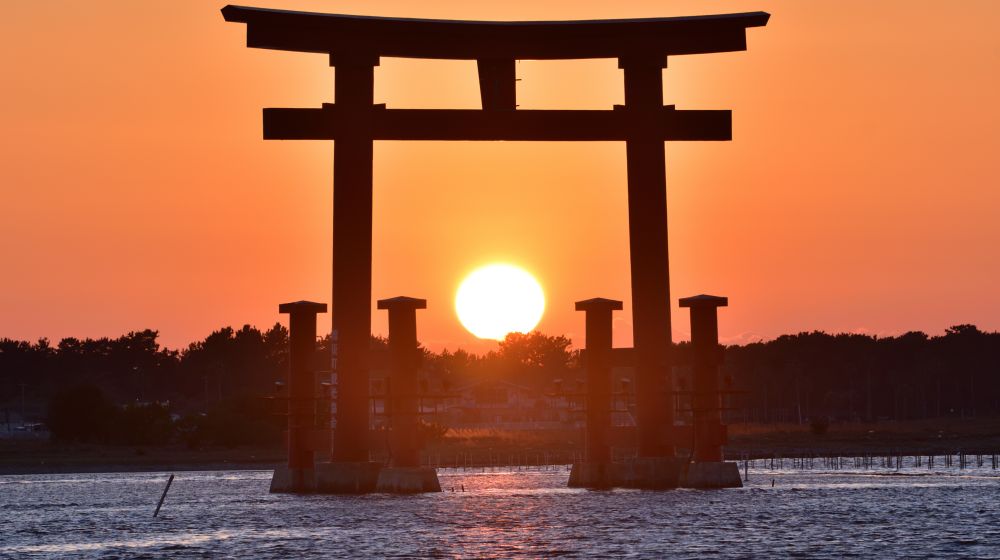

Atami Onsen
Shizuoka
Magic Time Stay adorned by the colors of the sky, sea, and forest.
.jpg)
Atami Onsen
Shizuoka
All 350 rooms with ocean views, experience a spectacular view at a marine resort
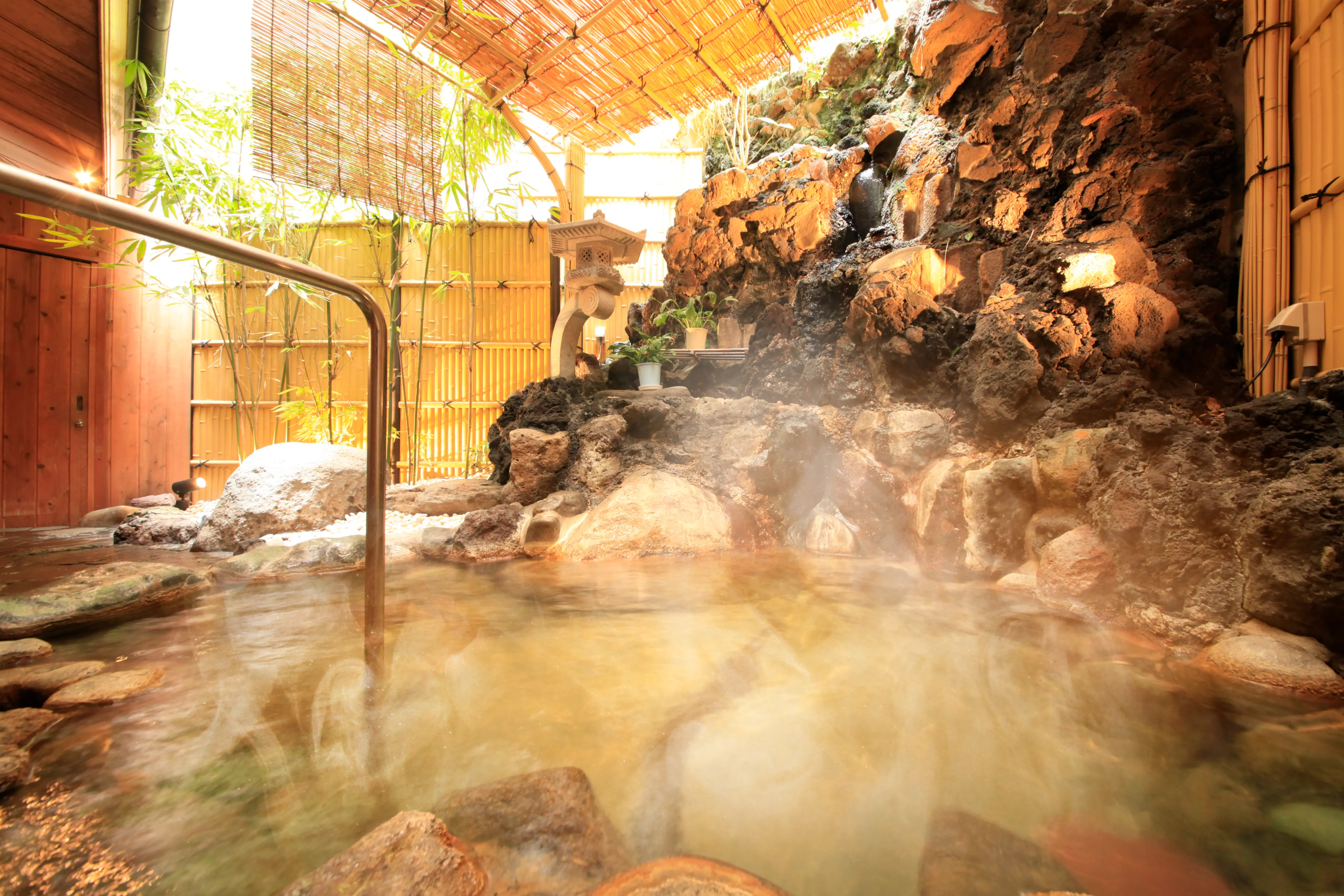
Atami Onsen
Shizuoka
The ryokan style inn that is particular about Atami's cuisine and customer service
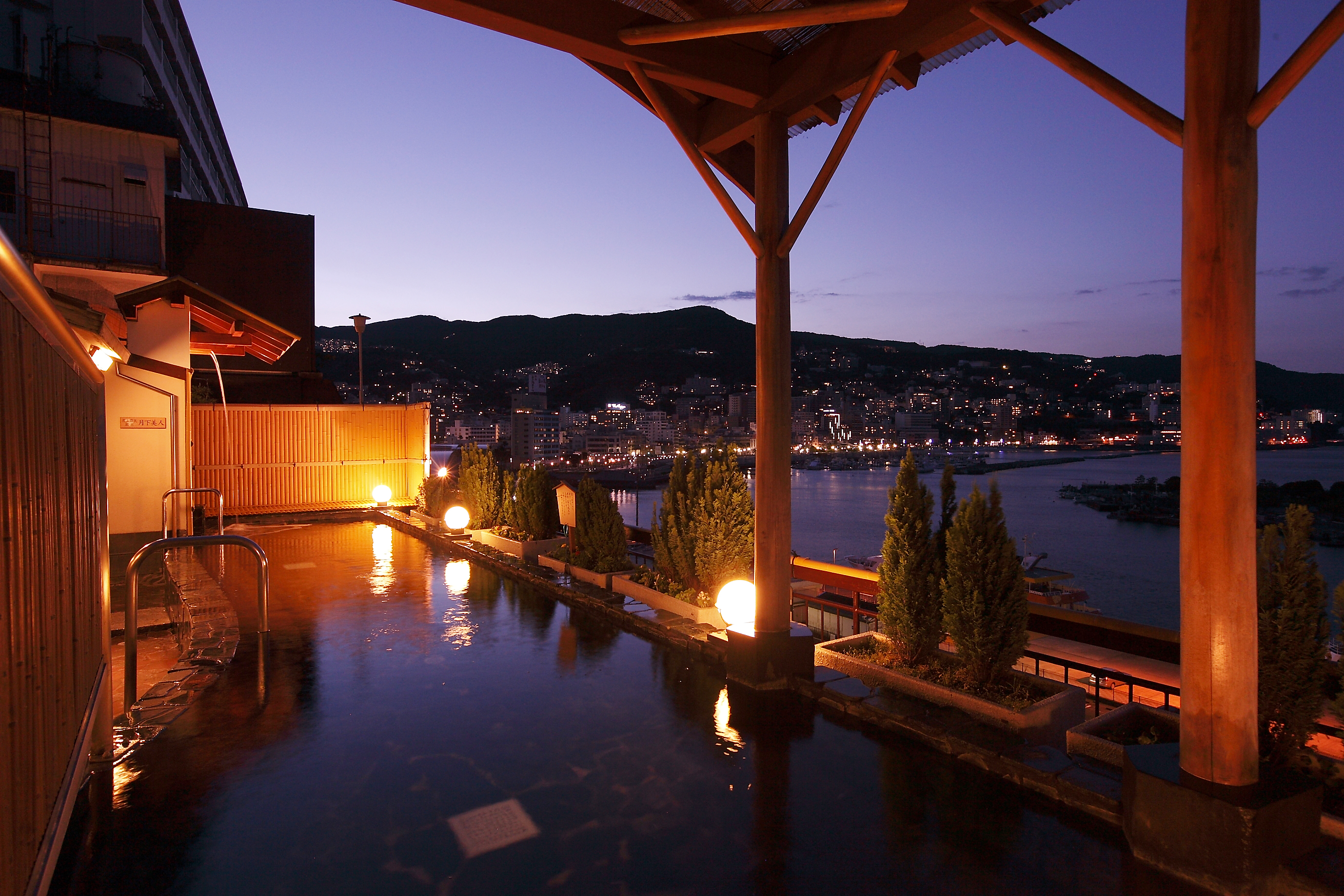
Atami Onsen
Shizuoka
THE ryokan style that is particular about Atami's cuisine and customer service